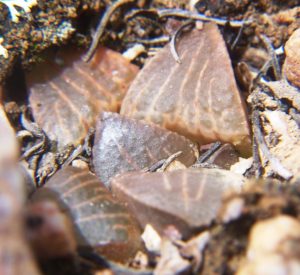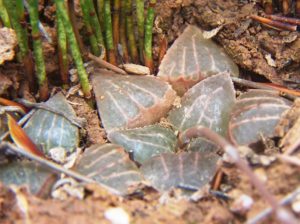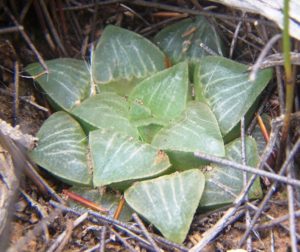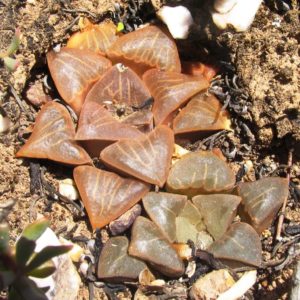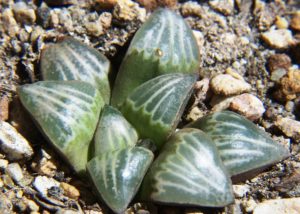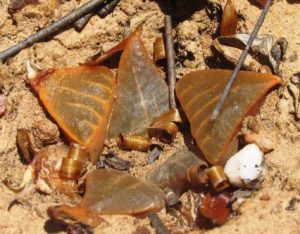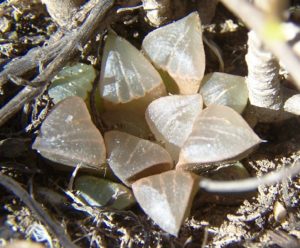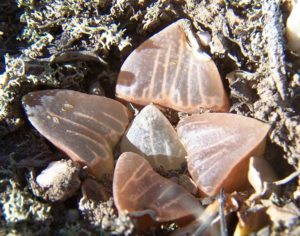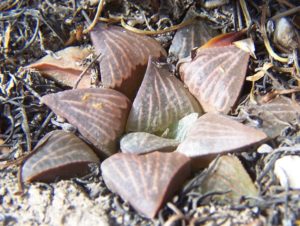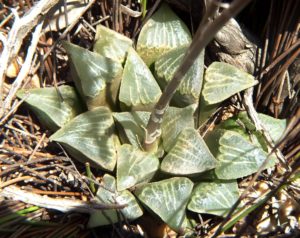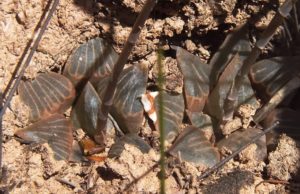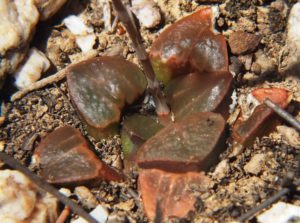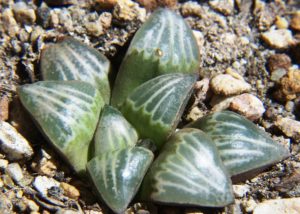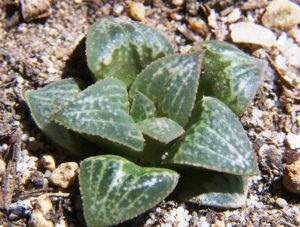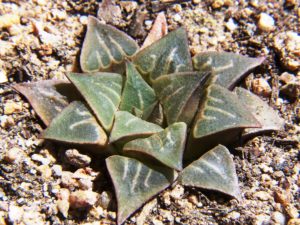58. 2019.07.15 – I did promise some surprises but I am abandoning any choices. There are really surprises in any one population. You all know the story of the baboon in the maize patch picking cobs? It is just like that with images. How many can you hold in your mind? How good are you at memorising, averaging, synthesising or whatever it takes, to make an accurate call on similarity or difference? Very few people are familiar with H. mutica at all, and yet make the call on “groenewaldii”. They probably do not even have a clear overview of what that really constitutes. These pictures now are from a population in the Stormsvlei area and from a habitat that is as different from the Buffeljags River site as it is from all the other mutica localities. It appears to be a saprolitic (chemically weathered) soil, earlier underlying a manganic (containing manganese) surface cementation. Nearby is a truly remarkable mirabiloid population on the cementation itself! The images can tell their own story and you can ask “where do those spot come from?” The same passing comet that dropped them on H. floribunda and groenewaldii further east? This is no new species and the weirdness of the close mirabiloid underscores my entire hypothesis. This is of a single interactive gene pool in the Southern Cape and Little Karoo birthing retusa, pygmaea, mutica, mirabilis and emelyae, with still several hundred populations to demonstrate this as a very probable hypothesis, if not fact. ♦
